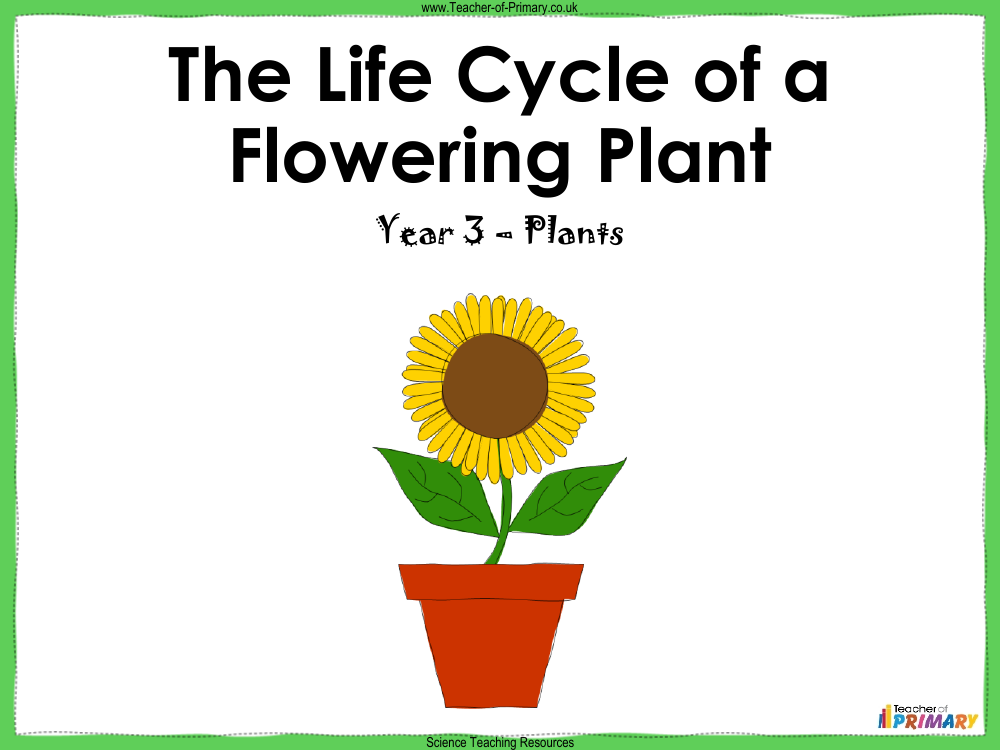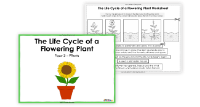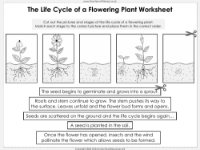The Life Cycle of a Flowering Plant - PowerPoint

Science Resource Description
The educational resource delves into the fascinating life cycle of flowering plants, tailored for Year 3 students studying the topic of plants in science. The resource begins by comparing a life cycle to a continuous cycle, akin to the wheels on a bicycle, with no defined start or finish. It highlights that a life cycle encompasses all the stages in the life of an organism, which in turn leads to repetition of the cycle. Specifically, the life cycle of a flowering plant is explored, starting from seeds containing an embryo. The journey of these seeds, as they are planted and given water and light, begins with germination, where the embryo sprouts roots and a stem. The growing stage follows, with the plant developing leaves and eventually forming a flower bud that blossoms into a mature flower, ready for reproduction.
The resource further explains the reproductive process in flowering plants, detailing the stages of pollination and fertilisation. Pollination can occur via wind or animals, with the former involving light pollen grains carried by air currents, and the latter involving insects attracted by the flower's bright colours and scents. Fertilisation results in the formation of seeds when pollen from the male part of one flower (stamen) reaches the female part of another flower (carpel). The final stage, seed dispersal, ensures the continuation of the plant's life cycle. Various methods of seed dispersal are discussed, including wind, animals, water, and even explosive mechanisms, all of which help seeds travel away from the parent plant, reducing competition and facilitating the spread of new plants.

